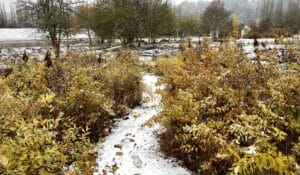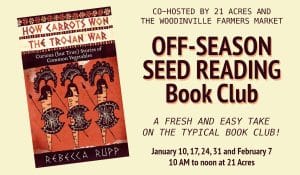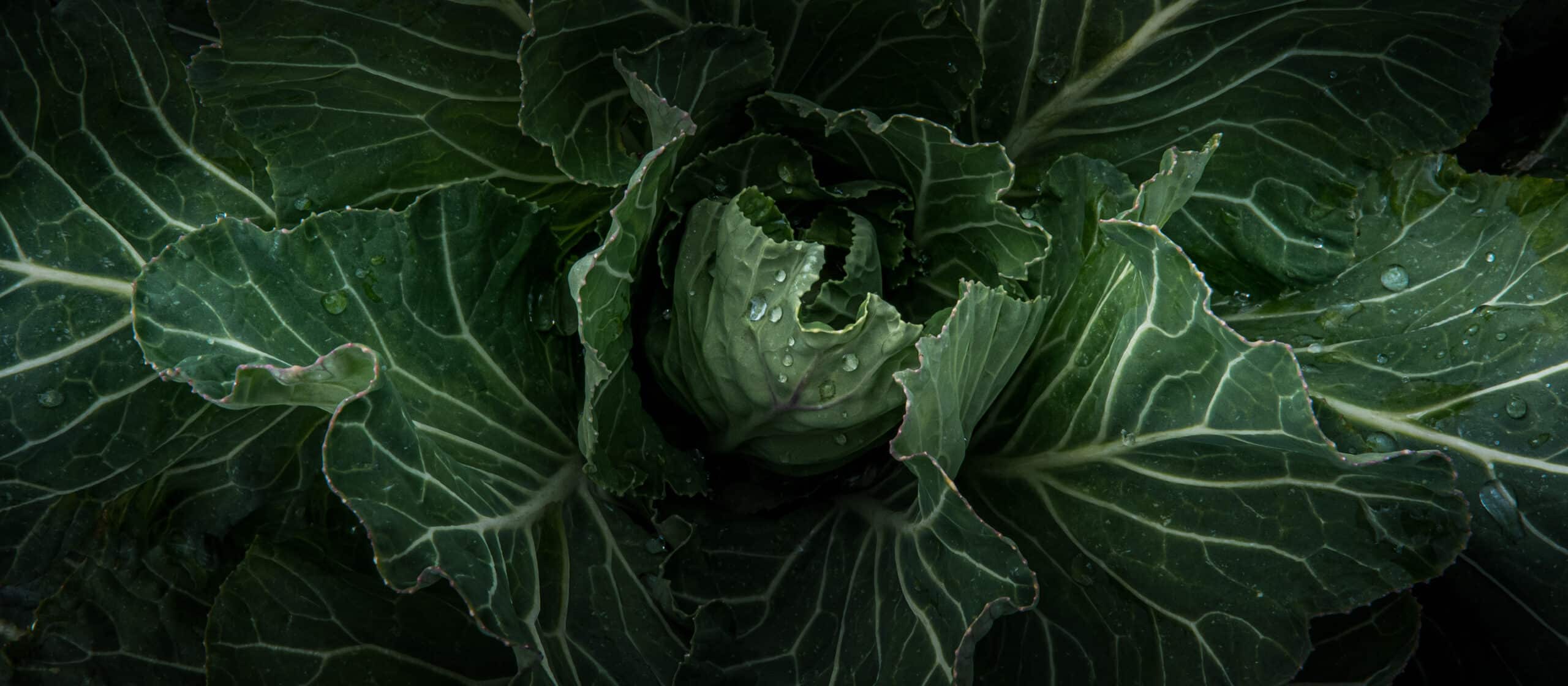
What We Learned from the Tilth Conference
What We Learned from the Tilth Conference
- posted on: January 7, 2022
- posted by: Rebecca Jordan
"*" indicates required fields

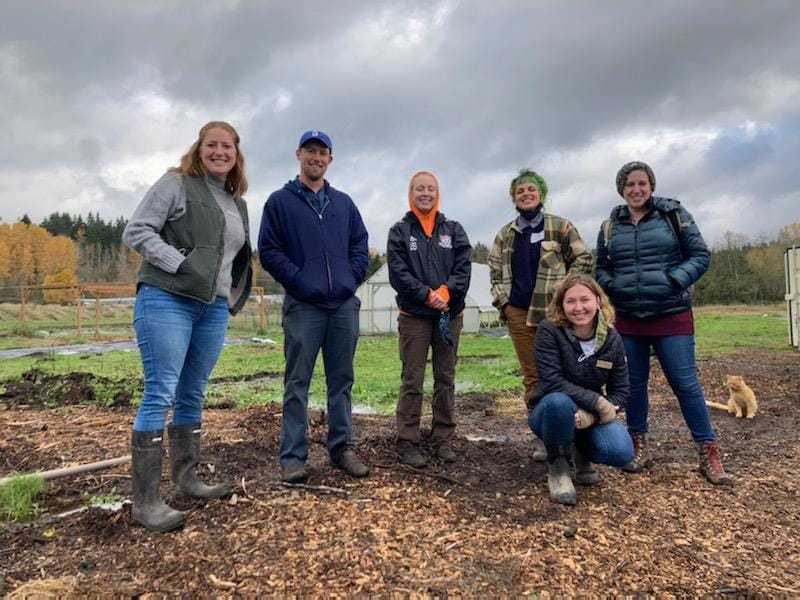
What’s a more powerful force in the food system than a farmer working alone?
That would be a group of farmers, distributors, nonprofits, researchers, and land stewards all working together for a robust food system—and a community that leans on each other.
In November 2021, a handful of us at 21 Acres got the opportunity to attend the Tilth Alliance Conference. Tilth Alliance works in community with Washington farmers, gardeners and eaters to build a sustainable, healthy and equitable food future. Every year, the conference brings together a group of people from diverse backgrounds to swap stories, research, and tips on how to grow more food, take care of the land, and take care of each other.
I was lucky to be able to join my colleagues this year and see work being done in the food system firsthand. We went on farm tours, talked to researchers, spun yarns, and heard from people continuing to feed our community amidst a pandemic and unprecedented climate struggles. Here are a few of the highlights from our experience.
Jess explores what agroecology means to land stewards
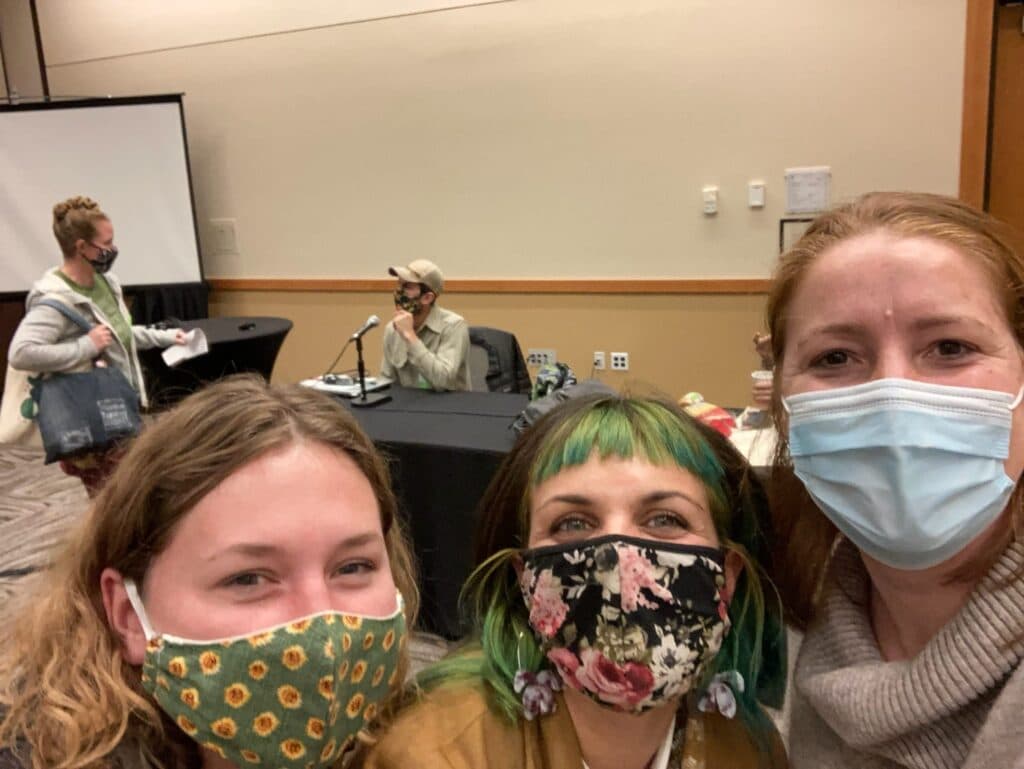
I attended the panel “Agroecology: Defining a Science, Practice, and Social Movement” hosted by my colleague Anthony Reyes and joined by Webster Walker from Community Alliance for Global Justice. Anthony set the groundwork for understanding the broad and complex concept of agroecology: an ecological approach to agriculture that focuses around caring for land and building just systems for the people who take care of the land. (If you’re curious to delve more into what agroecology means, I recommend checking out this article he wrote last year.)
This presentation gave some historical context to the movement and worked to separate the understanding of this concept from regenerative agriculture. Because I’ve been lucky to be a part of these conversations with farmers, I was excited to build on my understanding and create a more nuanced way of looking at agroecology. Webster Walker understood the term through an activist lens, which helped to build a layer of agency to the definition of agroecology. That’s where I get excited: moving beyond conversation to taking action.
Within the practice, definition, and science of agroecology, there is room (and in fact, it’s pretty much required) to incorporate a person’s personal narrative, the needs of the specific landscape that a person is stewarding, and the cultural practices and values that a person holds. In my small breakout group, we talked about the many systems and forces—political, economic, and social—that affect our farming practice. For me, this exercise really solidified the essence of why many people working toward a just food system is so powerful.
This dialogue led to a better understanding of agroecology and of each other, but I got the sense that we had only scratched the surface. Defining agroecology continues to be elusive and tricky for even practitioners of it such as myself. The sentiment “I know it when I see it” comes to mind—and I definitely see it happening on farms and land in the Sammamish Valley. Connecting and sharing as farmers and land stewards around this work within the food system for a liberated future feels like agroecology to me.
-Jess Chandler
Becca learns about cover crop research as a farm practice
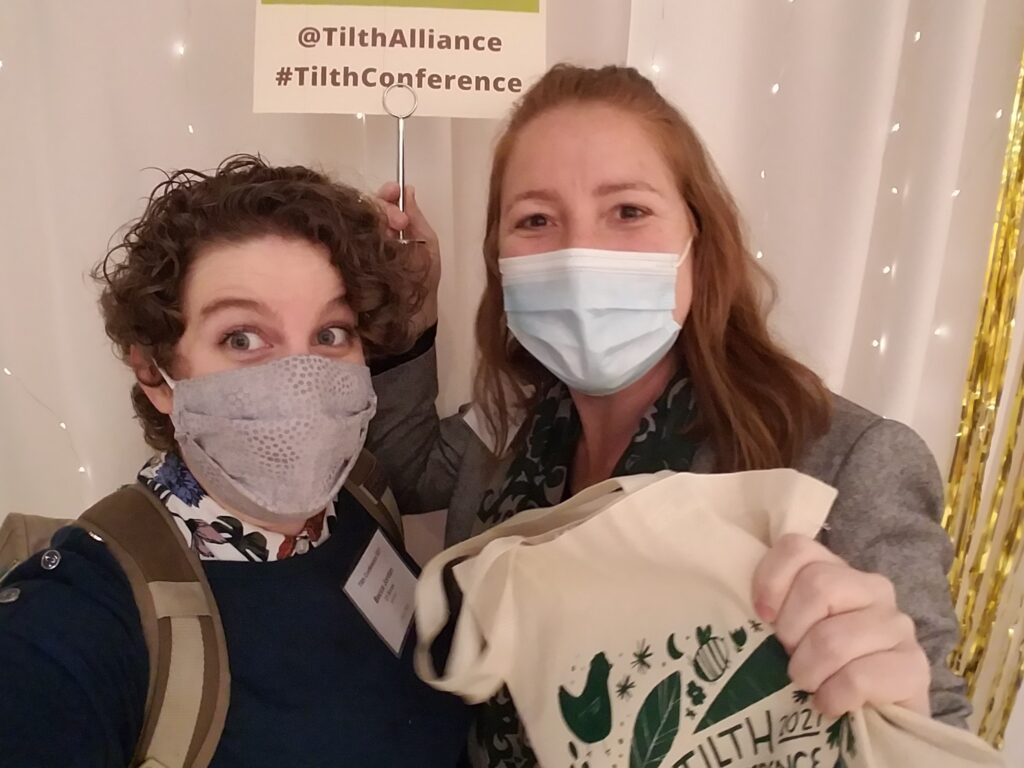
Did you know that fertilizers account for about 30% of all farmer energy use?
Even though I’m not a farmer by trade, I quickly got hyped about cover crops since I started working in food systems. Cover crops sequester carbon during downtime, make nitrogen available for crops, provide homes for beneficial pollinators, suppress weeds with biomass, and are a great alternative or partner to fertilizers. What’s not to love? (For those new to cover crops, we made this handy one-page guide earlier this year.)
That’s why I was excited to attend the panel On-Farm Trials, Evaluation, and Decision Tools for Cover Crop Management with Doug Collins at Washington State University (WSU), Nick Andrews at Oregon State University (OSU), and Rawley Johnson at Early Bird Farm.
One thing I learned from talking to farmers over the weekend at the Tilth Conference: cover crops aren’t always a home run. They can be expensive to maintain (especially in desert climates, where water can’t be spared) and require additional inputs from farmers in fallow periods. Just like any seasonal crop, timing is also critical.
The research that Doug and Nick are doing seeks to reduce the trial-and-error period for farmers, lowering the knowledge barriers that can be in place to successful implementation in a farm rotation. This year, Doug conducted twelve farm trials (including Early Bird Farm and one at 21 Acres!) to test cover crop mass and collect data for interseeding cover crops with fall-harvested cash crops. They tested Cosaque oats, Lana vetch, triticale, and white clover, interseeded in our Brassica rows on the south side of the 21 Acres farm, to determine which cover crops grow biomass most efficiently. Read more about that ongoing research here.
One interesting takeaway I learned from this panel has to do with PAN (Plant Available Nitrogen). Cover crops, along with other management practices, can free up nitrogen to be usable by farmed crops. And over a 70 day period, cover crops are actually less financially costly than most common fertilizers (such as blood meal) for the PAN produced.
Research around cover crops, or any farming practice, has provided these researchers with some data to use going forward. However, it’s usually site-specific. If you’re a farmer curious about the feasibility of introducing cover crops, this tool allows farmers to input cost of cover crops and other variables to help determine if it makes sense to implement cover crops on the farm.
Another important resource is SARE (Sustainable Agriculture Research & Education) publications Managing Cover Crops Profitably and How to Conduct Research on Your Farm or Ranch.
I am eager to keep learning more about the research happening on our farm and on other farms in the PNW to advance shared knowledge around regenerative farm practices such as cover crops.
-Becca Jordan
Liesl explores Agrarian Commons land ownership models
It was another great year of learning and fellowship at the Tilth Conference this year. I attended two sessions on the Sustainable Production track and learned great tips about efficient and safe design in your wash-pack area and how to integrate poultry on a mixed vegetable farm to increase soil and crop fertility. Thank you Ryan Lichtenegger of Steel Wheel Farm, Billy Mitchell from the National Farmers Union, and Rawley Johnson of Early Bird Farm for sharing excellent technical advice from your years of experience.
The session that still has me doing mental gymnastics was a presentation by the Agrarian Trust discussing their innovative land ownership model. Through the establishment of Agrarian Commons (12 so far including the newly established Puget Sound Commons), the Trust works with partner funders and farmers to establish 501(c)(2) and 501(c)(25) landholding entities. For those of you not versed in tax law, the gist is to eliminate the transfer of land and equity from individual to individual which historically limits access for non-corporate, small-scale, and marginalized community farmers. The Commons approach instead holds land in service of the community offering long-term lease tenure which includes sweat equity interest.
I appreciated the closing sentiment shared by the panelists – They do not tout that the Commons approach is the only solution to land access and equity. Rather, it is one approach to begin changing a broken system.
To learn more about the Agrarian Trust, the Agrarian Commons throughout the US, or how to get involved, visit www.agrariantrust.org.
-Liesl McWhorter
Anthony shares creativity and stories with the farmer community
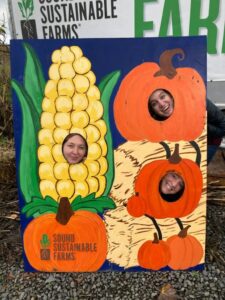
I have been going to the Tilth conference for the past eight years and have always found so much joy and happiness in the community, the philosophy, and the humility that comes with learning and sharing experiences. It’s a time I look forward to every year and one of the few times I can connect with other farmers and food system workers on a level that is both personal and professional. Throughout the years, one theme has become clear to me: relationships are an important tool in addressing inequities and challenges in our farm and food system. The Tilth conference continues to facilitate that important space.
On a typical year we’d be spending the evening do-si-do-ing and promenading with executive directors, farmers, researchers, nonprofits, and distributors. This year looks different and reasonably so. Navigating the safety and comfort of everyone present while trying to maintain the community and celebratory energy is tricky, but the event was as lovely as ever.
As there was still a need for music even if we didn’t all dance together, Sheryl Wiser and I were asked to play a song to open a storytelling event. Sheryl sang a beautiful cover of Tom Petty’s “I Won’t Back Down.” I sang a song I wrote about pruning blueberries in an unseasonably warm winter when all the buds were breaking in early January. So you can take solace knowing that I find a way to make even the most creative aspects of my life extremely nerdy about agriculture.
This was the second time both Sheryl and I were asked to perform music for the conference and while I’ve presented sessions, introduced speakers, volunteered, and involved myself in many aspects of the conference, there is something very special sharing the creative part of my life with people I know from a more professional setting. It was also possibly the most nervous I’ve been playing in front of people. Allowing yourself to show that side of who you are is challenging, it’s raw, and it’s vulnerable. And I was excited to share that with a community that I’ve gotten so much from and that has grounded me in countless ways. I wouldn’t be who I am or where I am today if it wasn’t for Tilth and its entire community. And for that I am eternally grateful.
The real treat, though, was the storytelling event that followed. Hearing about farmers and food system workers’ experiences was as humbling as it was inspiring. It showed the relatability of everyone in the room, including Dave Hedlin, a recipient of the Farmer of the Year through Hedlin Family Farms, who spoke about a beehive disaster. It was a beautiful way to see people for more than just farmers, or program managers, or distributors. They’re people navigating the same challenges and obstacles as everyone else and finding their own ways through. (Except the beehive and the pig that went overboard in the San Juans. Those seem like experiences that only a farmer can have.)
All to say, another year and another great way to connect and learn alongside peers. Thank you Tilth Alliance and thank you to its entire community past, present, and future.
-Anthony Reyes
Take Action
- Meet your local farmers on Eat Local First.
- Support policies that enable local farmers to keep growing food.
- Use this calculator to find out if cover crops makes sense for your farm.
- Read about agroecology.
- Follow Tilth Alliance on Twitter, Instagram, and Facebook.
- Tell us what you think! Email generalinfo@21acres.org with thoughts or questions about the local food system and farm community.










 back to blog overview
back to blog overview


